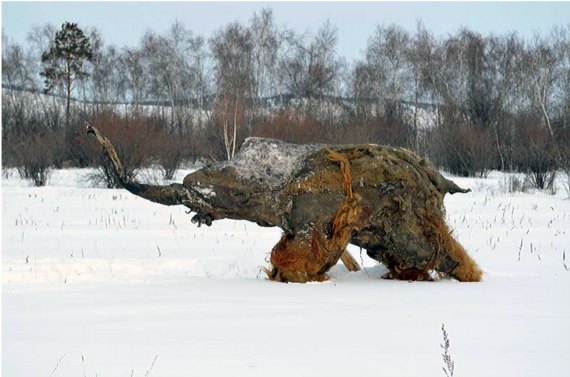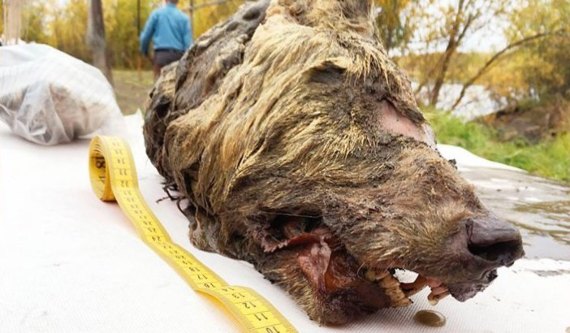In the final scenes of the 2002 animated film Ice Age, the character Scrat, a speechless sabre-toothed squirrel obsessed with collecting acorns, has been frozen for 20,000 years inside a block of ice, which washes up on a sandy beach and begins to melt. The rodent comes back to life, still fixated on recovering and storing his acorn, but ends up inadvertently triggering a volcanic explosion. The absurdity of the storyline aside, the notion that a Pleistocene creature could survive being frozen for tens of thousands of years was no doubt inspired by the numerous real-life discoveries, mostly in the Russian Arctic, of remarkably preserved Ice-Age era mummies, though in these cases, unlike Scrat, the animals that are recovered from the permafrost are most definitely dead.
The thawing of Arctic permafrost brought about by global warming is fuelling the discovery of mummified mammal remains that have been frozen below the surface for tens of thousands of years. While these biological time capsules provide a wealth of information for scientists and are a fascinating window into the past, their appearance is not a positive harbinger for the health of our planet.
When permafrost thaws, microbes begin to break down the plant material in the formerly-frozen soil, releasing greenhouse gases such as carbon dioxide and methane to the atmosphere, which drives further warming and creates a negative feedback loop. What’s more, long-dormant bacteria and viruses trapped in ice and permafrost can spring back to life and pose a risk to human and animal health, such as the anthrax outbreak in Siberia in 2016.

Interactive Map: Arctic Mummies
[+] Watch Fullscreen
Many discoveries of Pleistocene bones and mummies are made by gold miners who utilise high pressure jets of water to thaw permafrost and dislodge rock material or move sediment from riverbanks. Other mummies emerge naturally from the thawing permafrost, where they are spotted by sharp-eyed reindeer herders or mammoth-bone hunters. Some unscrupulous bone hunters use the same technique as gold miners, using pumps and water to thaw permafrost and expose the remains of mammoths, whose tusks and bones are often sold to supply the ivory market in China, where the trade in elephant ivory is becoming more restricted. But in the rush to retrieve this so-called “ice ivory,” many woolly mammoth cemeteries in Siberia have been vandalised in recent years.
DISCOVERED BY GOLD MINERS AND BONE HUNTERS
When the authorities are notified of discoveries and the scientists manage to transport these mummified palaeontological treasures to their research facilities (no easy feat due to their remote location and fragile condition), modern genetic sequencing techniques allow them to carry out biochemical analyses of samples taken not only from the fur and tissue of the animals themselves, but also from the content of their gut (the so-called “last meal”), from swabs of their mouth and skin, and from their faeces and the dirt surrounding the animal, which can also be examined for pollen, seeds, insects, crustaceans, micro-fossils, fungi or volcanic ash.
All these data enable researchers to paint a rich picture of the life of the creature, including its diet, the habitat in which it lived, even the season in which it died and the likely cause of death, and in the case of extinct megafauna such as mammoths, woolly rhinoceros, cave lions and cave bears, provide clues as to why they vanished. And, of course, there is always the dream of one day being able to clone the animals and bring them back to life.

A common misconception is that Ice-Age mummies are encased in ice, like the perpetually unlucky Scrat, or Ötzi the Iceman. In fact, mummified remains are normally preserved in permafrost soil, not ice. While ice crystals are usually present near the carcass, this helps to desiccate and preserve the tissue as moisture migrates from the flesh to the ice. The best preserved animals likely died after being trapped in bogs or marshy ground, or in the case of wolf, lion or bear cubs, were entombed when their dens collapsed or they were abandoned by their mothers.
Comments on this publication